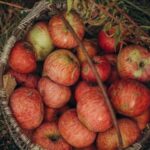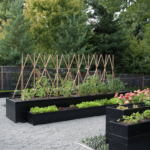High-yield vegetable gardening is a method that focuses on maximizing the output of your garden, producing a bountiful harvest of fruits and vegetables in a limited space. By utilizing efficient techniques and strategies, high-yield gardening can help you optimize your garden’s productivity while minimizing wasted space and resources. This approach is perfect for those looking to make the most out of their vegetable plots and enjoy a plentiful supply of fresh produce.
One key benefit of high-yield vegetable gardening is the ability to grow a diverse range of crops in a compact area, making it ideal for urban or suburban gardeners with limited space. By carefully selecting the right vegetables and implementing best practices for soil preparation, planting, and maintenance, you can achieve impressive yields even in small gardens.
Whether you’re a beginner gardener looking to maximize your harvest or an experienced grower hoping to increase productivity, high-yield gardening offers a rewarding way to cultivate your own nutritious fruits and vegetables.
In this article, we will delve into the essential aspects of high-yield vegetable gardening, from selecting the ideal location for your garden to choosing the best vegetables for optimal yield. We will explore tips for soil preparation, fertilization, planting techniques, watering methods, pest management strategies, and harvesting practices to help you succeed in growing a thriving and productive vegetable garden.
Get ready to learn how to harness the power of high-yield gardening to enjoy a rich bounty of homegrown produce throughout the growing season.
Selecting the Right Location for Your High-Yield Vegetable Garden
Sunlight and Exposure
One of the most critical factors to consider when selecting a location for your high-yield vegetable garden is sunlight. Most vegetables require at least 6-8 hours of direct sunlight per day to thrive and produce bountiful yields. Choose a spot in your garden that receives ample sunlight throughout the day, preferably with southern or western exposure for optimal growth. Avoid planting your vegetables in shaded areas or near tall structures that may block sunlight.
Soil Quality and Drainage
Another important consideration is soil quality and drainage. High-yield vegetable gardening requires fertile, well-draining soil that is rich in nutrients to support healthy plant growth. Test your soil’s pH levels and nutrient content to determine if any amendments or fertilizers are needed before planting. Look for a location with loamy or sandy soil that drains well to prevent waterlogging, which can lead to root rot and other issues.
Proximity to Water Source
Lastly, consider the proximity of your chosen location to a water source. Adequate watering is crucial for successful high-yield vegetable gardening, so ensure that you have easy access to water for irrigation purposes. Whether you plan on using a hose, drip system, or sprinkler, having a convenient water source nearby will make it easier to keep your plants properly hydrated throughout the growing season.
By taking these factors into account when selecting the right location for your high-yield vegetable garden, you can set yourself up for success and maximize the productivity of your crops. Remember that proper planning and site selection are essential steps towards achieving a fruitful harvest from your garden while practicing effective high-yield vegetable gardening techniques.
Choosing the Best Vegetables for High-Yield Gardening
When it comes to high-yield vegetable gardening, selecting the right vegetables is crucial for a successful and bountiful harvest. Some vegetables are more productive and efficient in terms of space utilization and yield compared to others. One key consideration when choosing vegetables for high-yield gardening is to opt for crops that are known for their prolific nature and continuous production throughout the growing season.
Vegetables such as tomatoes, zucchinis, cucumbers, and peppers are excellent choices for high-yield gardening due to their ability to produce a large quantity of fruits or vegetables over an extended period. Additionally, leafy greens like lettuce, spinach, and kale are also great options as they can be harvested multiple times during the growing season without significantly reducing plant productivity.
Another important factor to consider when selecting vegetables for high-yield gardening is the adaptability of the crop to your specific climate and growing conditions. Choosing varieties that are well-suited to your region can help ensure a successful harvest with minimal challenges. Whether you have limited space or a sizable garden area, incorporating a mix of high-yield vegetables can help diversify your produce while maximizing the output of your garden.
| Vegetable | Reason |
|---|---|
| Tomatoes | Prolific fruit production throughout the season |
| Zucchinis | Continuous harvest of squash-like fruits |
| Lettuce | Multiple harvesting opportunities without compromising plant health |
Tips for Soil Preparation and Fertilization to Maximize Yield
Soil preparation and fertilization are crucial steps in achieving a successful high-yield vegetable garden. By ensuring your soil is nutrient-rich and well-prepared, you can promote healthy plant growth and maximize your harvest. Here are some tips to consider for optimal soil preparation and fertilization:
- Conduct a soil test: Before planting your high-yield vegetable garden, it’s essential to know the current state of your soil. A soil test can provide valuable information about nutrient levels, pH balance, and organic matter content. Based on the results, you can make informed decisions about which amendments or fertilizers to use.
- Choose the right amendments: Depending on the results of your soil test, you may need to amend your soil with specific nutrients. Common amendments include compost, manure, lime, and organic matter. Incorporating these amendments into your soil before planting can improve its structure, fertility, and drainage.
- Fertilize strategically: Once you have amended your soil, it’s important to establish a fertilization plan for your high-yield vegetable garden. Consider using slow-release organic fertilizers to provide a continuous source of nutrients throughout the growing season. Be mindful of the specific needs of each vegetable crop and adjust your fertilization schedule accordingly.
By following these tips for soil preparation and fertilization, you can create an ideal growing environment for your high-yield vegetable garden. Remember that healthy soil is the foundation for bountiful harvests, so investing time and effort into preparing and nourishing your soil will ultimately pay off in the form of abundant crops.
Planting Techniques for Optimal Spacing and Growth
When it comes to high-yield vegetable gardening, proper planting techniques play a crucial role in maximizing the productivity of your garden. By ensuring optimal spacing between plants and providing adequate room for growth, you can significantly increase the yield of your vegetables. Here are some essential planting techniques to consider:
- Companion planting: Pairing compatible vegetables together can help deter pests, improve pollination, and optimize space utilization. For example, planting tomatoes with basil or marigolds can help repel insects and enhance the flavors of both crops.
- Succession planting: Planting new crops as soon as one harvest is finished allows you to make full use of your garden space throughout the growing season. This practice ensures a continuous supply of fresh vegetables without any wasted space.
- Square foot gardening: Dividing your garden into square-foot sections and planting specific quantities of each vegetable per square foot can help maximize yields while minimizing wastage. This method is particularly useful for small spaces or raised beds.
In addition to these techniques, it’s essential to pay attention to the spacing requirements of each vegetable variety to promote healthy growth and prevent overcrowding. Providing adequate room for roots to develop will result in larger, more robust plants that are better equipped to produce a bountiful harvest. Be sure to refer to seed packets or gardening guides for specific recommendations on plant spacing for different types of vegetables.
Proper plant placement not only influences the overall productivity of your garden but also helps prevent competition for sunlight, water, and nutrients among neighboring plants. By following these planting techniques for optimal spacing and growth in your high-yield vegetable garden, you can create an environment where each crop thrives and contributes to a successful and rewarding harvest at the end of the season.
Watering and Irrigation Methods for High-Yield Vegetable Gardening
Watering and irrigation are crucial aspects of high-yield vegetable gardening, as adequate moisture is essential for plant growth and productivity. One effective method to ensure your vegetable garden receives sufficient water is drip irrigation. Drip irrigation delivers water directly to the base of plants, reducing evaporation and water waste. This method also helps prevent weeds from growing between plants, giving your vegetables the best chance to thrive.
Another efficient watering technique for high-yield vegetable gardening is using soaker hoses. Soaker hoses allow water to seep slowly into the soil, promoting deep root growth and minimizing surface runoff. By keeping the foliage dry, soaker hoses can also decrease the likelihood of diseases developing in your vegetable garden. Additionally, mulching around plants can help retain moisture in the soil, reducing the frequency of watering needed while keeping your plants healthy.
It is important to monitor the moisture levels in your high-yield vegetable garden regularly to ensure that your plants are receiving adequate hydration. A simple way to determine if your garden needs watering is by conducting a finger test – stick your finger about an inch into the soil near your plants.
If it feels dry, it’s time to water. By employing proper watering and irrigation methods, you can support the growth of a thriving vegetable garden with bountiful yields.
| Watering/Irrigation Method | Benefits |
|---|---|
| Drip Irrigation | Direct delivery of water to plant roots |
| Soaker Hoses | Promotes deep root growth and minimizes runoff |
| Mulching | Retains moisture in soil and reduces watering frequency |
Pest and Disease Management Strategies
Pests and diseases can wreak havoc on a vegetable garden, diminishing yields and causing frustration for gardeners. Implementing effective pest and disease management strategies is essential for maintaining a successful high-yield vegetable garden. By being proactive and vigilant, you can prevent infestations and ensure that your plants remain healthy and productive throughout the growing season.
Companion Planting
One strategy to naturally deter pests in your high-yield vegetable garden is through companion planting. Certain plants have properties that repel harmful insects or attract beneficial ones. For example, planting marigolds around your tomatoes can help deter nematodes, while basil can repel mosquitoes and flies. By strategically planning which vegetables to plant near each other, you can create a natural barrier against pests.
Organic Pest Control
Incorporating organic pest control methods is another way to manage pests in your high-yield vegetable garden without resorting to harmful chemicals. Utilizing insecticidal soaps, neem oil, diatomaceous earth, or even homemade remedies like garlic spray can help control common garden pests like aphids, caterpillars, and beetles. These natural solutions are not only safer for the environment but also for beneficial insects like bees and ladybugs.
Disease Prevention
Preventing diseases from taking hold in your high-yield vegetable garden is crucial for maximizing yields. To reduce the risk of fungal infections like powdery mildew or blight, practice good sanitation by removing diseased plant debris promptly. Properly spacing plants to allow for air circulation and avoiding overhead watering can also help prevent the spread of diseases.
Additionally, rotating crops each year can break the cycle of soilborne diseases. By following these disease prevention measures, you can maintain a healthy garden and optimize your harvests in a high-yield vegetable gardening system.
Harvesting and Preserving Your High-Yield Vegetable Garden Bounty
After all the hard work you have put into your high-yield vegetable garden, it is finally time to reap the rewards. Harvesting your vegetables at the right time is crucial for ensuring the best taste and nutritional value. Different vegetables have varying indicators of readiness, such as color, size, or texture. Be attentive to these signs and pick your produce when they are at their peak ripeness.
Once you have harvested your bountiful crop, it’s essential to know how to properly preserve them to enjoy throughout the season. There are various methods you can use, such as canning, freezing, dehydrating, or pickling. Each preservation technique has its advantages depending on the type of vegetable you are dealing with. Properly stored and preserved vegetables will allow you to enjoy the fruits of your labor long after the growing season has ended.
In addition to traditional preservation methods, another way to make the most out of your high-yield vegetable garden bounty is by incorporating fresh produce into your meals every day. You can create delicious dishes using your homegrown vegetables or even experiment with canning recipes or homemade sauces. By preserving and consuming your harvest in different ways, you not only elevate the flavors but also appreciate the efforts put into high-yield vegetable gardening even more.
Conclusion
High-yield vegetable gardening is a rewarding and fruitful endeavor that allows you to maximize your harvest and produce an abundance of fresh, homegrown vegetables. By carefully selecting the right location, choosing the best vegetables for high-yield gardening, preparing the soil adequately, and implementing proper planting techniques, you can set yourself up for success in growing a productive garden. Watering, fertilizing, and managing pests and diseases are also crucial aspects to consider when aiming for high yields.
One of the key factors in achieving success with high-yield vegetable gardening is understanding the needs of your plants and providing them with optimal conditions for growth. By following the tips outlined in this article, you can increase your chances of having a bountiful harvest throughout the growing season. Additionally, learning how to properly harvest and preserve your vegetables will ensure that you can enjoy the fruits of your labor long after they have been picked.
In conclusion, high-yield vegetable gardening requires dedication, knowledge, and careful planning to achieve maximum results. By following the guidelines provided in this article and applying them to your own garden, you can create a thriving vegetable garden that provides you with a continuous supply of fresh produce. So roll up your sleeves, get your hands dirty, and start on your journey towards successful high-yield vegetable gardening today.
Frequently Asked Questions
What Are the Highest Yielding Vegetables?
Some of the highest yielding vegetables include tomatoes, cucumbers, zucchinis, bell peppers, and green beans. These vegetables tend to produce a large quantity of crops per plant, making them popular choices for home gardeners looking to maximize their harvest.
How Do You Maximize Vegetable Yield?
To maximize vegetable yield, it is essential to provide your plants with the right growing conditions. This includes proper soil preparation, adequate watering and fertilizing, sufficient sunlight exposure, and regular pest control. Pruning or trellising certain plants can also help increase yield by promoting better airflow and sunlight penetration.
How Do I Lay Out My Vegetable Garden for a Higher Yield?
When laying out your vegetable garden for a higher yield, consider factors such as crop rotation, companion planting, and spacing between plants. Crop rotation helps prevent soil depletion and disease buildup, while companion planting can improve pollination and pest control.
Proper spacing between plants allows each one to receive enough nutrients and sunlight for optimal growth. Additionally, utilizing raised beds or containers can help maximize space and productivity in your garden.

If you’re looking to get into vegetable gardening, or are just looking for some tips on how to make your current garden better, then you’ve come to the right place! My name is Ethel and I have been gardening for years. In this blog, I’m going to share with you some of my best tips on how to create a successful vegetable garden.





